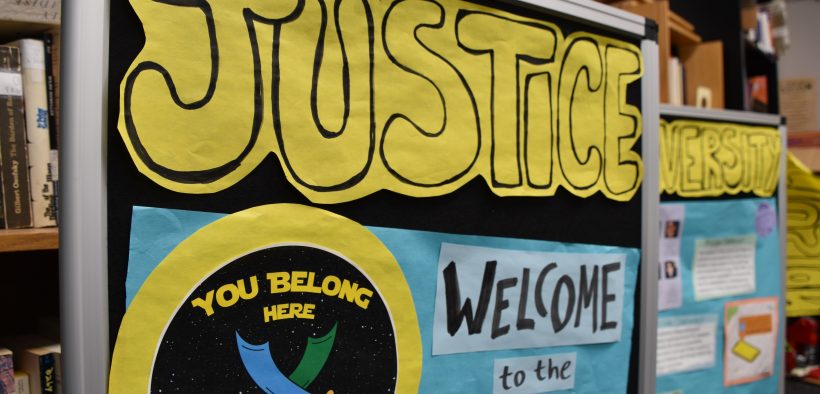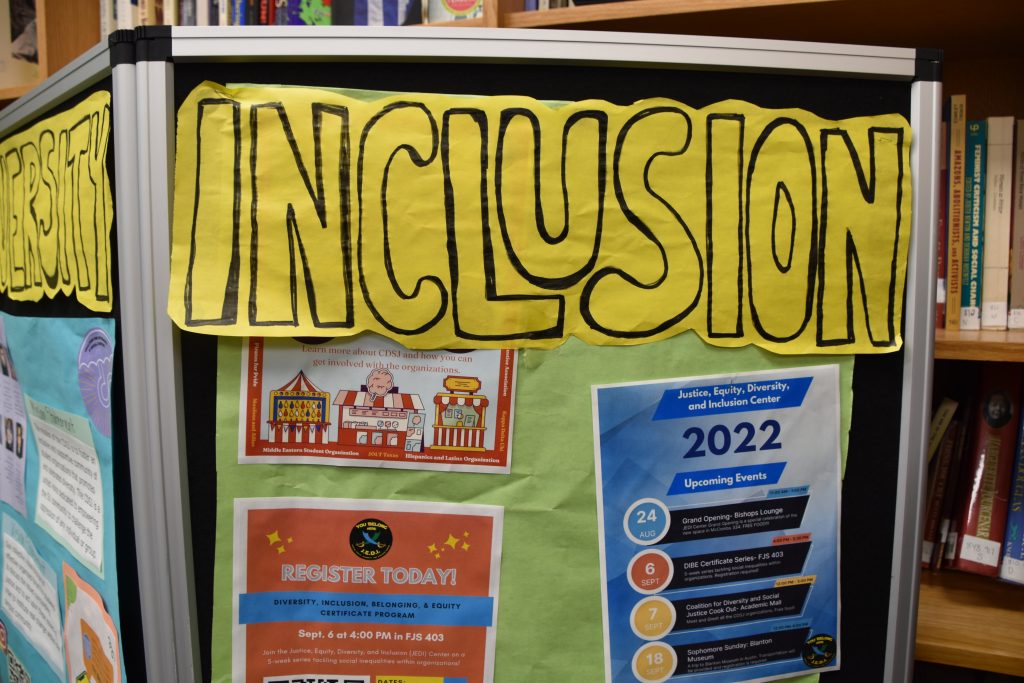Navigating SU as a Student of Color
Share

Written by Daniela Echevarria
The Race and Ethnicity Studies Symposium entitled Navigating Southwestern University as a Person of Color was put together in response to a noose being placed in the bathroom of Ruter Hall. The panel, which took place January 26th, was composed of professors, staff, and students. They sat before students and university personnel as they discussed the struggle of existing as a person of color on Southwestern’s predominantly white campus.
The shocking incident of a noose being placed in the bathroom in Ruter Hall was a clear threat to the students of color on campus. Last semester, the investigation began while incomplete communication about the incident circled. The panelists reflected on how our university handled everything. They voiced their concerns about the incident and what they believe the university should have done differently. Student Jorge Castillo wished that Southwestern had done more in-person communication instead of emails which felt impersonal and trite. Dr. Lamiyah Bahrainwala found the university’s emails to be “race-evasive” and applauded the POC community on-campus for spreading true information in real time. Dr. Rico Self highlighted that it was not only students, but POC faculty and staff who were deeply affected by what the noose implied. All in all, the panel concluded that there was much to be desired in SU’s response to the incident— but this is nothing new for POC people on-campus.
When asked if Southwestern was doing their part in making POC comfortable on-campus, the panelists’ answer was a clear, resounding, unanimous no. Jennifer Leach informed the audience that there is no mandatory staff training on racial relations, equity, and inclusion and that professors are protected by university afforded freedoms. This is ironic because Southwestern is an institution that praises and claims social justice to be important. However, it is easy for students to avoid taking courses that concern these issues. Dr. Rico Self suggested that Southwestern should be a leader and do the hard work now rather than wait for other examples to appear. President Trombley, later in the evening, agreed saying that “these are not new issues.” She suggested that Southwestern needs to be a leader for other institutions and tackle these issues. “I don’t want to say that it’s hopeless,” Dr. Jennifer Leach, Director of Advising and Retention, expressed. There is clearly hope for the Southwestern faculty and staff who tirelessly fight for space and policies that bring equity.
So the question was imposed: what can we, as students, do to fix it?
What can white students do?
For our majority of white students, the answer is to be self-reflective and to have an open mind. Find your personal biases and actively work to understand where they come from and how they affect you. Don’t be embarrassed about your discomfort or ashamed, just recognize it and learn from it. Take courses that you might not normally take and go into them with a willingness to learn from other perspectives. Dr. Lamiyah Bahrainwala championed acknowledging racism. She encourages people to apologize for the pain they caused regardless of their intention, and then move on. “Stop seeing racism as a slur,” Dr. Bahrainwala said boldly. She wants people to not focus on trying to avoid being called racist or being called out for racism but to instead unlearn racist thoughts and beliefs. To be active, Dr. Bahrainwala also advises students to hold their professors accountable. Stand up for your POC peers in the classroom and use your privilege to protect them from discrimination. The panel lamented that it is hard work but that it is necessary for there to be any change.

What can POC students do?
For POC students on-campus, your job is to find support. Health educator Santiago Rocha shared his experience, which he believes is an experience shared among many students of color. When faced with racism, he asks himself: “Am I overreacting?” But then answers his own question with: “That is an unfair question.” POC should feel valid in how they feel.
Kellie, president of the Black Student Union, said to POC students, “What may be best for you in the moment is other people.” She stressed the importance of finding your people and building community. It will be easier when something happens to fall back on those people and act in a group when it is safe to do so. Santiago Rocha mentioned ways that students of color could find support. They could become involved in the Captain’s Academy, the Student of Color Support Group, the JEDI center, or go to the Student Engagement Center (on the third floor of McCombs). These are all ways that students can find and build community. There are also student-run organizations like the Black Student Union, HALO, ASA, and CDSJ that are available for students to become involved in as well.
What is the take away from all this?
A major takeaway from the RES Symposium is the importance of community. The panelists ended the evening by detailing ways that students can support each other when racism rears its ugly head. In a conversation with someone who is describing their experience, be sure to practice active listening. You can actively listen by validating their emotions— whatever these may be. As discussed by Dr. Bahrainwala, instead of asking what you can do— ask the students of color what they need. If necessary, point your friend to resources on campus like the counseling center or a club or even a faculty or staff member. Romania Ntoti placed importance upon going with your friend to these resources, instead of just directing them there. She suggests that you meet your friend where they are in their journey through a racist world, see their perspective, and find empathy. It is important for SU students to call out racism when it happens and be willing to do the hard work. We want to make sure that POC feel like they are seen and have space to talk. That is how we can change the tide and be there for our community.
